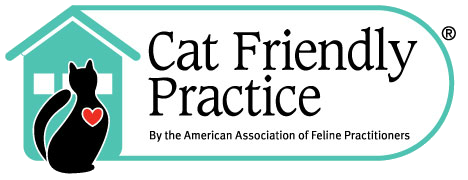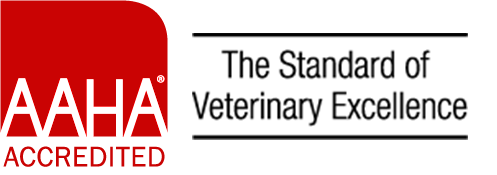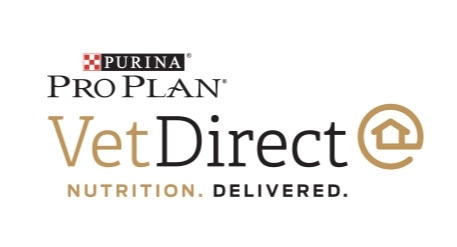|
Facts about Feeding Pets
Some pet owners forget that humans require a variety of foods to ensure the consumption of nutritionally balanced meals. A quality pet food has a proper balance of all the nutrients a pet requires together with a high level of palatability.
Adding human food to a nutritionally balanced commercial pet food may upset the nutrient balance of your pet’s diet. Ideally, table scraps should not be fed. You may also be creating behavior problems. Your pet may begin to steal food from the table or the food preparation area. Try feeding your pet at regularly scheduled times, such as when the family is having breakfast or dinner. Feed only enough to maintain your pet in good body condition. Ignore its coaxing for additional food, or give hugs, play time or walks instead.
Here are some of the foods to watch out for:
Milk is a food and not a substitute for water.
Repeatedly adding raw eggs to a dog's diet can cause a deficiency of the vitamin biotin, which can lead to dermatitis (inflammation of the skin), loss of hair and poor growth.
Some raw fish can cause a deficiency of the vitamin thiamine. Signs of a thiamine deficiency include anorexia (complete loss of appetite), abnormal posture, weakness, seizures and even death.
Raw meats may contain parasites and bacteria and do not contain a proper balance of nutrients if fed alone. Although meat is a source of protein, it has very low levels of calcium, a mineral dogs require for proper bone and tooth development. If large quantities of raw meat are fed over time, skeletal problems may develop.
Raw liver, fed daily in large quantities, can cause vitamin A toxicity in dogs.
Small soft bones (such as pork chop or chicken bones) should never be given to your dog, as they may splinter and lodge in his mouth or throat.
Diet Do’s and Don’ts for Your Pets: How to Provide a Balanced Diet
A healthful, balanced diet is as important to pets as it is to people, but with hundreds of different food brands to choose from, how do you decide what — and how much — to feed your pet?
“Because each animal is an individual, I always recommend beginning with a consultation with your veterinarian,” says Laura Eirmann, DVM, from AAHA-accredited Oradell Animal Hospital in New Jersey.
Your veterinarian will explain your pet’s nutritional needs based on age, breed, medical condition, and activity level. Although many dog and cat food manufacturers market products based on life stages, such as senior or lactating dogs, broad categories are not always appropriate for every pet.s
For example, "some pets are physiologically older than their peers (because of disease) even though chronologically they’re the same age. That physiological difference is why it’s important to consult with your veterinarian (before you select a food),” Eirmann explains.
What brand should you buy?
Deciding which brand of pet food to buy can be confusing, especially since hundreds of dog and cat food products are introduced annually. Talk to your vet for specific recommendations for your pet’s needs.
As you sort through various brands, look for a nutritional statement from the Association of American Feed Control Officials (AAFCO).
The AAFCO determines appropriate levels of proteins, fats, vitamins and minerals in growth and maintenance cat and dog foods and it “helps set the standards for the pet food industry,” says Lisa M. Freeman, DVM, PhD, DACCN, who works at AAHA-accredited Foster Hospital for Small Animals in Massachusetts.
Manufacturers frequently use terms like natural, organic, premium or gourmet to appeal to pet owners, but Freeman and Eirmann say “complete and balanced” are the terms pet owners should be most concerned about.
Before a food can be marketed as “complete and balanced,” it must undergo a strict feeding trial under AAFCO guidelines or meet AAFCO nutrition levels.
Cautions about raw food diets
Although raw food diets are popular with some pet owners, professionals from the United States Food and Drug Administration (FDA) say, “feeding raw meat products carries a risk to human and animal health that is significant” because of food-borne pathogenic bacteria.
The FDA cites published reports of pets becoming sick or dying after eating contaminated raw meat and warns that pet owners may be susceptible to “infection by pathogenic organisms from direct contact with the diet itself” or from contact with diet-related bacteria that passes from meat to pets. Bacteria may also be present in feces.
In addition, the FDA warns that raw meat diets may not provide proper nutrition for your pet. There may too little calcium and phosphorus, too much vitamin A (which may be toxic over time) or inappropriate amounts of other nutrients to ensure a complete and balanced diet.
How much food should you give?
“If there’s one thing we know in nutrition, it’s that caloric restriction — keeping pets lean their entire life — helps them live longer,” Eirmann says.
Unfortunately, the FDA’s Center for Veterinary Medicine (CVM) estimates that 25 percents of dogs and cats entering veterinary clinics are overweight and warns that “obesity can shorten a pet’s life by contributing to heart and liver problems, diabetes, arthritis, bladder cancer and skin disorders, and put a pet at higher risk while undergoing anesthesia and surgery.”
So does all of this mean you have to eliminate treats or the occasional table scraps from your pet’s diet? “There a little bit of leeway,” Eirmann says. “The general guideline is to look at the calories required to maintain ideal body weight. If you don’t exceed that number by about 10 percent of the calories, you’re unlikely to unbalance a complete and balanced diet.”
“My advice is to ask your veterinarian to assess your pet’s individual needs,” Eirmann says. “The amounts of those ingredients may vary by brand. Your veterinarian can determine if the amount (in a particular food) is appropriate for your pet.”
Food allergies
Diet can be a complicated factor in pet allergies. Most animals are not born with allergies to food; their immune systems develop an allergic response over time to some part of their diet, often one of the animal proteins. A food allergy can present in a lot of different ways, including the itching, digestive disorders, and respiratory distress already mentioned. They can be a real challenge to solve, however. You can try to figure out what’s causing your pet’s allergic reaction by feeding him different diets, but the allergic effects of food can stay in the system for eight weeks. You may have to keep your furry friend on a special hypoallergenic (non-allergy-causing) diet for eight to twelve weeks to see how he reacts, and you may have to do it several times with several different diets before you find one that doesn’t cause an allergic reaction. And while you’re feeding these test diets, you’ll have to make very sure that your pet doesn’t eat any treats, vitamins, leftovers or scraps, or even plants around the house. He has to eat the test diet exclusively for the entire eight to twelve weeks to determine whether he has an allergic reaction to it.
What do I do if my pet develops a food allergy?
To determine whether your pet has a food allergy, you’ll need to see your veterinarian. Once your pup is diagnosed with a food allergy, you can give him some relief by finding a diet that contains only "novel" food sources, for example things that your dog has never eaten and therefore probably hasn’t developed an allergy to. The diet should also contain as few preservatives and additives as possible, to eliminate the possibility that the additives are causing the allergic reaction.
There are a wide range of diets that you and your veterinarian can evaluate together, ranging from prescription diets to homemade lamb and rice, catfish and potato, or even pinto beans and potato diets. The most important thing is that you and your veterinarian work together to find a healthy, balanced diet that will keep your dog itch-free and happy. It may take some patiencedit can take a long period of trying various food combinations to find the one that works for your dog.
| 






